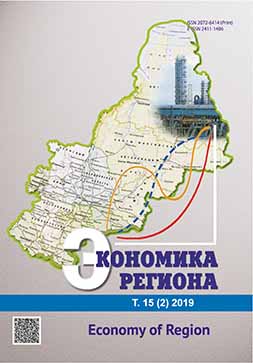INFLUENCE OF THE CUSTOMS INSTRUMENTS
ON IMPLEMENTATING THE COMMON AGRICULTURAL POLICY IN THE EURASIAN ECONOMIC UNION
INFLUENCE OF THE CUSTOMS INSTRUMENTS
ON IMPLEMENTATING THE COMMON AGRICULTURAL POLICY IN THE EURASIAN ECONOMIC UNION
Author(s): Viktor Evgenyevich Kovalev, Dmitrievna Oksana Falchenko, Aleksandr Fedorovich Linetsky, Anatoly Grigoryevich TarasovSubject(s): Supranational / Global Economy, Agriculture, Globalization
Published by: Институт экономики Уральского отделения Российской академии наук
Keywords: economic integration; globalization; customs union; Eurasian Economic Union; World Trade Organization; regional trade agreements; foreign trade; tariff rates; customs tariff; customs duties;
Summary/Abstract: The article analyses characteristics of the participation of the Eurasian Economic Union’s (EAEU) member states in the World Trade Organization (WTO) and its impact on the Eurasian economic integration. We described the contradictions in the regulatory frameworks between the WTO agreements and regional trade agreements. Moreover, we offered the ways to overcome these contradictions. We demonstrated the role of the economic and legal exemptions that operate on the EAEU’s domestic agrarian market in connection with the accession of Russia and Kazakhstan to the WTO. On the one hand, these exemptions were shaped under the influence of tariff commitments made by Russia in the field of agriculture. On the other hand, they were formed due to Kazakhstan’s subsequent entry into the WTO and the discrepancy of its tariff obligations for agricultural products with Russia’s tariff obligations in the conditions of functioning of the EAEU’s common customs tariff. We explored Kazakhstan’s tariff commitments to the WTO. We have proved that for the EAEU’s further effective development, its participants need to initiate compensation negotiations with other WTO members in order to equalize the overall level of the import duties on the EAEU territory. The study’s results can be applied for harmonization of the tariff rates of the EAEU members. It is necessary for achieving the most effective joint economic development and implementing the coordinated foreign trade policy in various economic sectors, including agro-industrial policy and agricultural development of the EAEU states.
Journal: Экономика региона
- Issue Year: 15/2019
- Issue No: 2
- Page Range: 534-546
- Page Count: 13
- Language: English

